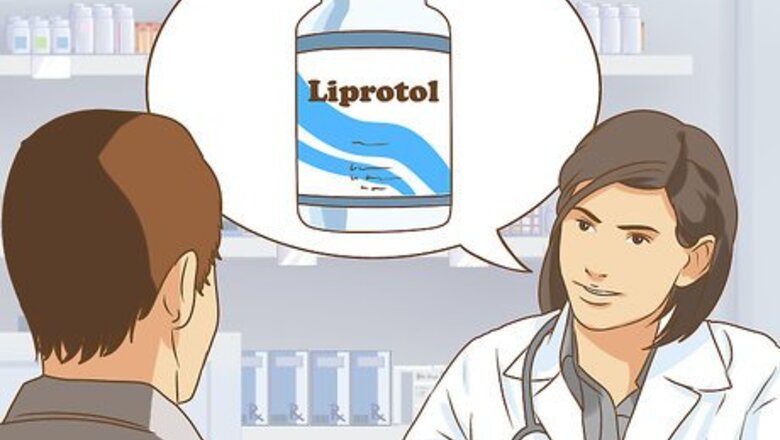
views
X
Research source
In fact, most Americans aren’t vitamin-deficient and probably don’t need vitamin water,[2]
X
Research source
But by recognizing water soluble vitamins and adding them to your water with food or supplements, you can get an extra dose of nutrition and even add some flavor to plain water.
Dissolving Vitamins in Water
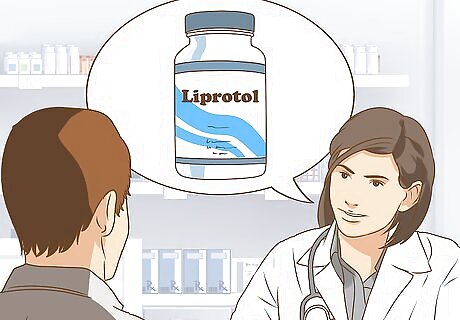
Use supplements only as necessary. You might find it hard to get enough vitamins and nutrients through your diet. While it’s ok to add a multi-vitamin or supplements to your water, try and get as many of these as possible from foods. Consult with your doctor before taking vitamins and supplements to ensure they are safe for you. Be aware of vitamin “megadoses,” which may be detrimental to your health. Taking too many of them for a long time can have harmful effects. Effervescent Vitamin and mineral supplements have up to 1g of salt per tablet.
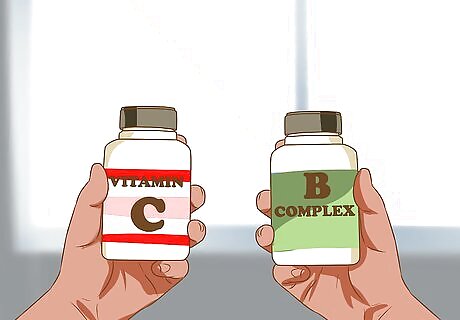
Decide what type of vitamin supplements you want to add to your water. You can buy tablets to crush, a prepared powder, or liquid vitamin supplements, which will dissolve better than tablets. Deciding on the type of vitamin to take is an important step in knowing how to add vitamins to water. Remember that Vitamins C and the B Complex are the only supplements you can mix with water to get their nutritional value. Other vitamins need fat to circulate through your system. Buy single pills of vitamin C or B complex at your local pharmacy and crush them. Ask your doctor, pharmacist, or health store specialist if there are powdered or liquid versions of the vitamins you can mix with water.
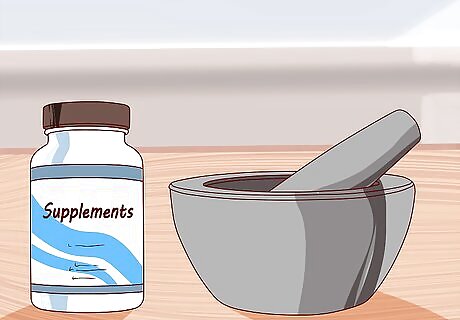
Crush your vitamins. If you decide to use vitamin pills in your water, you’ll need to pulverize them before you mix them into the water. Use a mortar and pestle or a pill crusher. Make sure the vitamins are ground into a fine powder so that they mix easily into the water. Be aware that not fully pulverizing the pills could make it difficult for your body to absorb them. Crush only the recommended daily dose of your vitamin.
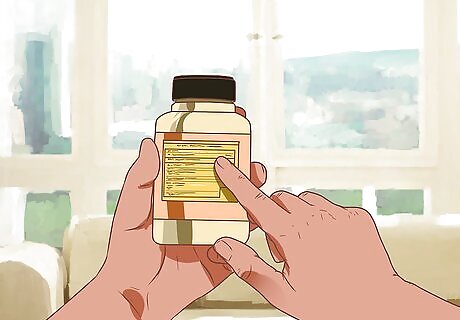
Read packaging instructions. If you chose to use a powdered vitamin or liquid form, read the packaging label. This can help you know the amount to mix with water for optimal absorption. Avoid taking more than the recommended value per day. This can help prevent serious health conditions from consuming too many vitamins.
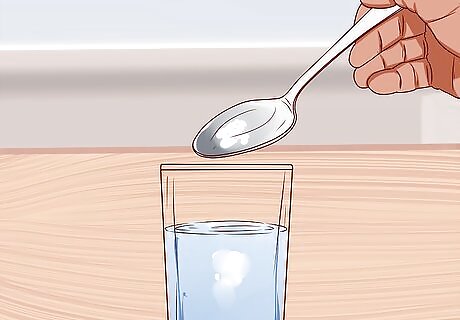
Mix the supplements with water. Once your supplement powder or liquid are ready, you’re ready to mix them with your water. Make sure to shake the mixture well in a clean bottle so that the vitamins are able to be easily absorbed in your system. Use boiled or distilled water, not plain tap water. Fill the water bottle ¾ full and then add the vitamins. Consider adding them to warm water for better dissolving and absorption by your body.
Adding Fruits and Vegetables to Water
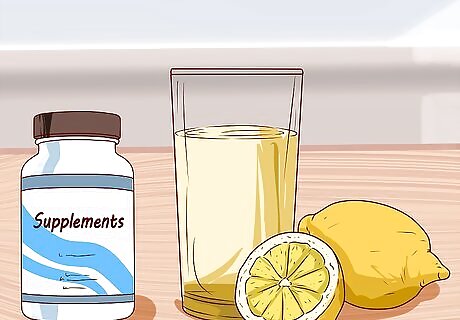
Slice fruits or vegetables for water. If you prefer to avoid supplements, you can also add whole fruits or vegetables with Vitamins C and B Complex to your water. This may add vitamins to water without chemicals and may add a pleasant flavor as well. Add slices of lemon or orange or your water for a boost of vitamin C. Add raspberries to your water for a boost of B vitamins. You can also get B vitamins from papayas, cantaloupe, and oranges. These can help flavor your water. Try adding a little grapefruit juice. It is low in calories, rich in phytonutrients and anti-oxidants, as well as vitamin A and C.
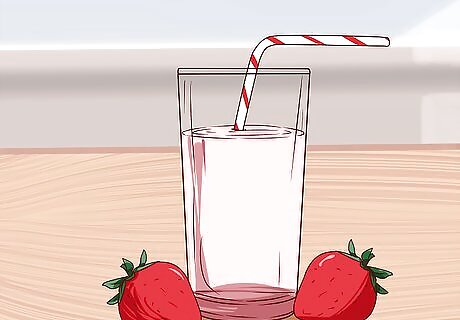
Blend a smoothie. Although smoothies are often made with milk, you can add fruits and vegetables to water and blend them into a smoothie. This can help you can vitamins in your water. Mix vegetables and fruits high in Vitamins C and B Complex to the water and some ice cubes. Consider choices like spinach, kale, strawberries, and blueberries. Remember that getting vitamins through food is the best way to get them. Adding fruits and veggies high in water-soluble vitamins may be the optimal way to do this.
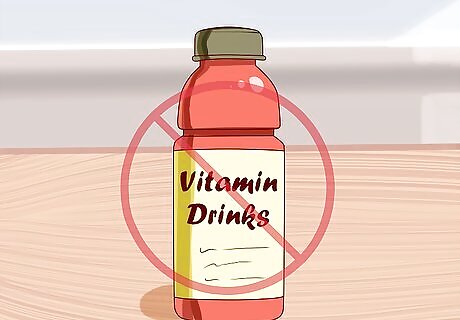
Avoid commercial vitamin drinks. There are many waters or beverages on the market that claim to be vitamin-enhanced. But many don’t contain that many vitamins and also have a considerable amount of sugar. In fact, one expert said that vitamin waters are essentially just soft drinks. Drink these beverages if you are in a pinch or want the flavor.
Recognizing Water Soluble Vitamins
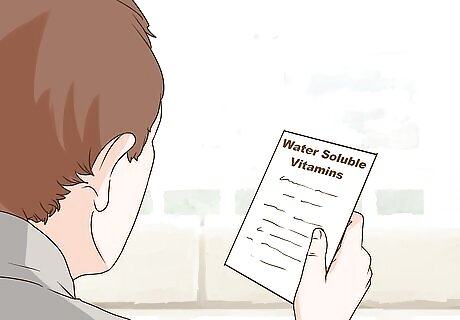
Learn about water-soluble vitamins. There are two types of vitamins: water and fat soluble. Water soluble vitamins enter the bloodstream through water while fat soluble vitamins need dietary fat to dissolve. Learning which vitamins are water soluble can help you mix the right vitamins into your water and get optimal nutritional benefits from them. Be aware that foods such as fruit, vegetables, potatoes, grains, and dairy foods are high in water-soluble vitamins. Exposing water-soluble vitamins to heat can cause them to lose their potency or destroy them altogether. Getting water-soluble vitamins is often easiest by steaming or grilling foods and pouring cooking water into soups or stews.
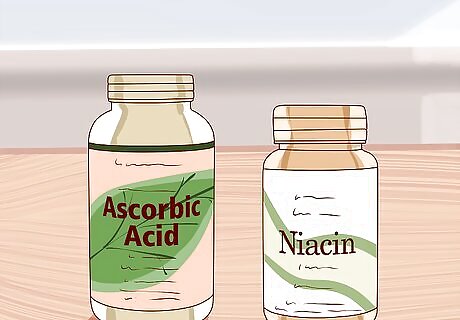
Identify water-soluble vitamins. A wide range of vitamins are water-soluble. Informing yourself which vitamins are water soluble can help figure out what supplements or foods to add to your water. The two most prominent water soluble vitamins are: Vitamin C, or ascorbic acid, is an antioxidant that promotes tissue health and helps your body absorb iron. It may also help heal wounds. B vitamins, including niacin and B-12, help maintain the health of your circulatory system, brain health, cell metabolism and nerve function.
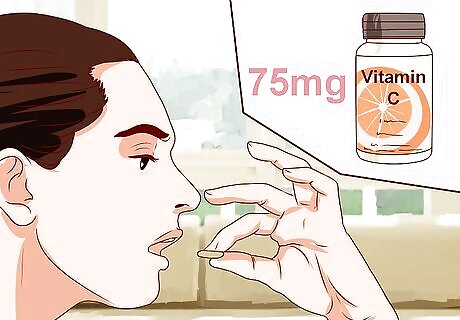
Be aware of recommended daily values for water-soluble vitamins. You need Vitamin C and the B vitamins to maintain your overall health, and it most cases you’ll get through by eating nutritious whole foods. However, being aware of how much you need daily can help you figure out what supplements you need to add to your water. Women should get 75 mg vitamin C while men should aim for 90 mg. Eating citrus fruits, berries, tomatoes, potatoes, peppers, broccoli, spinach and drinking 100% fruit juices can help you reach your vitamin C goal every day. Get the recommended daily dose of the B-vitamins according to the specific vitamin. For example, adults need 2.4 mg of B-12 per day; 400 micrograms of B-9, which is also called folic acid; and 14 – 16 milligrams of B-3, or niacin, every day. Eating a range of foods such as whole and fortified or enriched grains, nuts, peas, meat, shellfish, poultry, eggs, dairy, peanut butter, and bananas can help you get all of the B vitamins you need.
















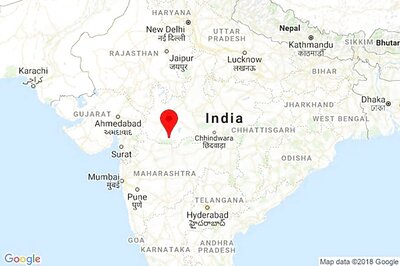
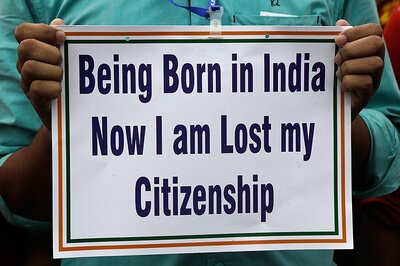
Comments
0 comment